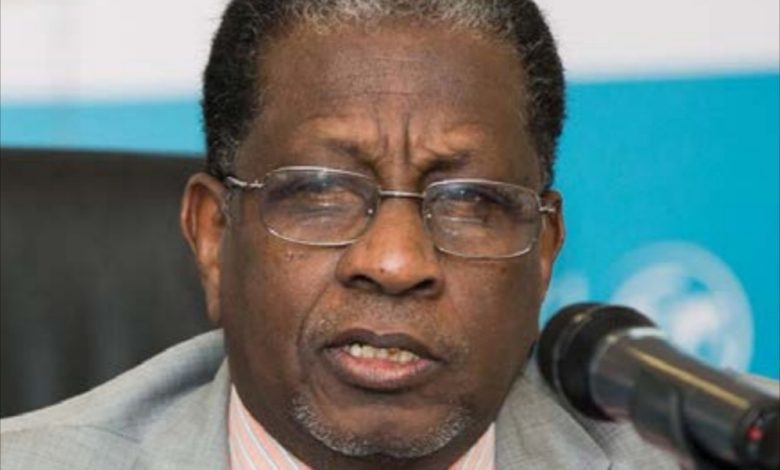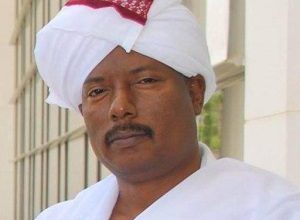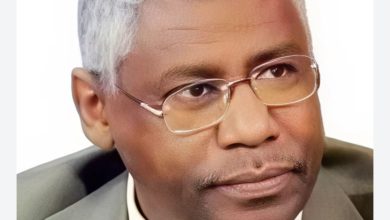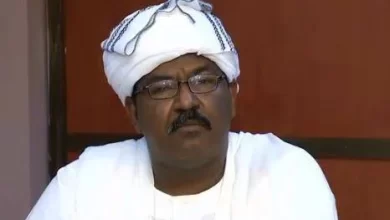Sudan’s RSF and the Quest for a Project (2 -3)

Tigani Abdelkader Hamed
September 27, 2023
(Translated by: Ramadan Ahmed)
Despite this power, General Hemetti was apprehensive about the regular military institution, which in turn was wary of him. Although he was able to persuade some of the retired army officers to join him, he still had concerns. The pursuit of dismantling the military institution and replacing it with loyal tribal elements is one of the similarities between him and Gaddafi. This prompted us to revisit this topic in an attempt to complete the comparison by providing a brief overview of the steps Colonel Gaddafi took in dismantling and rebuilding the military institution. We will also examine how General Hemetti attempted to follow the same path and ended up with the same catastrophic results in just four years that it took Colonel Gaddafi forty years to achieve. However, let us first look at Colonel Gaddafi’s actions.
The Dismantling Project of Colonel Gaddafi
As soon as Colonel Gaddafi seized power, he dismissed many army officers, converting some into civilian positions and others into diplomatic roles abroad. He ordered the closure of the Royal Military College in Benghazi. He started recruiting high school students, sending them to military colleges in Egypt to form the nucleus of his new military institution. These steps were unsurprising for a revolutionary movement seeking to secure its domestic military position while strengthening its regional and ideological (Pan-Arab nationalist) influence. However, what was surprising is that the “tribal underpinning” of this “nationalist revolutionary” leader’s support base was quite narrow.
Colonel Gaddafi insisted that only those who met tribal requirements could join his new military institution. He ordered all members of his own tribe, the “Gaddafi,” who were studying in high school to enrol in the military college. He even included those who did not have a high school diploma. Abdul Salam Jalloud did the same for members of the “Miqarhah” tribe, and among them was Abdullah Al-Sanusi, known as “Al-Maqrahi,” who did not have a diploma from the Teacher Training Institute. Gaddafi’s decree and Jalloud’s endorsement were equivalent to a diploma.
As if tribal affiliation was not enough, Colonel Gaddafi surrounded himself with his three sons: Saif al-Islam (in charge of political and diplomatic affairs), Al-Mu’tasim (given control of the National Security Council), and Khamis (in command of special forces). Khamis’s unit was initially named “Khamis Brigades” but was later renamed the “32nd Brigade.”
In this way, Colonel Gaddafi managed to achieve two objectives simultaneously: dismantling the old military establishment and tribalising it. These actions paved the way, albeit unnoticed, for the eventual downfall of his regime. It’s worth noting that before Gaddafi’s coup, the Gaddafi tribe had no significant social or economic influence in Libyan society. Some experts in Libyan tribal affairs suggest that they were originally part of the Ouled Suleiman tribe or the Warfalla tribe. Many of their families migrated to Chad during the Italian occupation of Libya, and some returned to Libya after the discovery of oil. Their descendants either joined the police forces or engaged in handicraft jobs due to their limited education and the nomadic lifestyle they had adopted in Chad.
However, once one of their own assumed political power and opened doors to state institutions, they rushed to occupy these positions driven by tribal loyalty and material gain. This phenomenon is reminiscent of certain Arab Bedouin tribes that migrated between South Libya, Chad, Niger, and Darfur, eventually becoming a human resource pool for the RSF after General Hemetti rose to power in Sudan.
Despite dismantling the old Libyan military institution, Colonel Gaddafi did not leave a void. He created an alternative structure comprising three interrelated systems: an ideological system derived from the Green Book to legitimise his rule, an official political system represented by the People’s Congress system (which was merely a formal reflection of the ideology but lacked practical significance), and an unofficial system consisting of military, economic, and social entities parallel to the official structures. This unofficial system relied on a unique pattern of political, military, tribal, and economic alliances. This third system was the active one, manipulated by the other two systems for various purposes, while a small inner circle known as the “Tent People” controlled it. This inner circle consisted of Gaddafi’s family and leaders of the Gaddafi tribe.
The Governing Tribalism
Notably, the rise of the ‘Qadhafi’ family to power and their transformation into a ‘governing tribalism,’ enjoying numerous military and economic privileges, enticed other tribes to engage with them or form alliances. Ibn Khaldun rightly observed that it is possible for the rulers of governing tribalism to create a people from those who are not of their lineage. These created individuals would be incorporated into that tribalism, assume its identity, and benefit from its privileges. Once these privileges are secured, they are considered part of the tribalism, as if they had always belonged. This observation seems to apply perfectly to the ‘Qadhafi’ family in Libya. As soon as they seized power, several members of their family gained a special attraction. They merged with other tribes during the era of oil and the state. ‘Qadhafi’ tribes were no longer just simple Bedouin tribes; they transformed into a wide tribal alliance, which later became more like a conglomerate of interests. It included various social strata, known as the ‘middle class’ in other Arab societies. Fragile elites, including politicians, businessmen, semi-intellectuals, media figures, artists, and poets, also joined this alliance. In this manner, Qadhafi penetrated Libyan society and maintained control for over forty years.
If we carefully examine this image, remove the name ‘Colonel Qadhafi,’ and replace it with ‘Lieutenant General Hemeti,’ delete ‘Qadhafi’ and ‘Muqarrah,’ and replace them with ‘Awlad Mansour’ and ‘Al-Mahariyah,’ and the rest of the tribal components of the ‘RSF,’ we can see a form of ‘governing tribalism’ beginning to crystallise in the Sudanese context under Hemeti’s leadership, supported by allies both domestically and internationally. This situation mirrors Libya’s state fifty years ago. Furthermore, upon closer inspection, we can see groups of tribal leaders and emerging party figures actively rallying around the leader of the governing tribalism, sometimes referred to as ‘Prince Hemeti,’ precisely as Ibn Khaldun foresaw. If you think that there are no ‘Bedouin tent men’ in Hemeti’s case, look no further than the ‘Awlad Daglo’ tent, created by Hemeti’s brothers and non-brothers to serve as the core leadership for the RSF. It includes:
Mohammed Hamdan Daglo (Supreme Commander)
Al-Gouni Hamdan Daglo (Political Office)
Adel Daglo (Supply Director)
Mohammed Ismail Daglo (Deputy Intelligence Chief)
Jumaa Daglo (Advisory Office)
Raed Mohammed Jumaa Daglo (Special Forces Commander)
Brigadier Rami Hamdan Daglo (Armour Commander)
Ezzat El-Mahari (Official Spokesperson)
Hence, it becomes evident that the similarity between Qadhafi’s and Hemeti’s projects lies in their ability to create a ‘governing tribalism’ that replaces the military and state institutions. They both attracted fragile political elites (from the right and left) and artificially cultivated a social support base from certain tribal elements that could be won over through financial and social incentives. Indeed, Lieutenant General Hemeti did not possess oil wealth as Qadhafi did. Still, he did have a well-equipped military force, substantial resources, and support and supplies from two major oil-rich countries in the region. The only difference is that Colonel Qadhafi aspired to become the ‘King of African Kings,’ while Hemeti did not achieve that ambition. Furthermore, Colonel Qadhafi cloaked himself in a loose ideological cover known as the ‘Green Book,’ claiming it would solve the problems of democracy and socialism. On the other hand, Lieutenant General Hemeti has been searching right and left for a ‘Green Book’ to provide ideological cover and pave the way for legitimacy.
Lieutenant General Hemeti and the Search for a Green Book
Anyone monitoring the emergence and evolution of the RSF realises that they lack a unifying philosophy or national vision. They are more like a ‘functional group,’ a vast network comprising military personnel, security officers, media figures, businessmen, and tribal leaders. This network came into being under internal circumstances and regional and international penetration. In its relentless pursuit of power and wealth, it did not hesitate to engage in agendas it did not fully comprehend or fight against undefined enemies under slogans it did not fully understand. This was the vacuum filled by political elements from the ‘facilitators,’ ambitious individuals who attempted to turn the Awlad Daglo into a ruling family and transform Hemeti into an inspiring leader by creating a Green Book, completing the missing link as the ‘facilitators’ had done by creating a Green Book for Colonel Qadhafi.
They first presented him with the ‘Lawyers’ Document,’ then set it aside and developed the ‘Framework Agreement’ project. They organised a workshop on security and military reform. They brought in a number of foreign experts to explain ‘concepts and theoretical foundations of security and military reform’ and ‘the theoretical approach to security arrangements.’ They drafted a paper for him in which they urged a review of the military college curriculum, the removal of ideologically inclined personnel from the armed forces, the development of military doctrine, and the inclusion of ‘gender’ and ‘human rights’ in the new military law (note the inclusion of gender rights!). Needless to say, such issues and ideas, diligently presented by experts like Sinzana Fox, Jeff Mabtadri, Iyad Al-Jarrah, and Chris Lockham, were far removed from Lieutenant General Hemeti and his soldiers’ understanding. Therefore, the ‘facilitators’ abandoned these ideas and returned to using simplistic rhetoric: the ‘janjaweed,’ ‘outlaws,’ ‘the 56th state,’ the ‘Nile strip,’ ‘returning to the founding platform,’ and the ‘old and new Sudan.’ These are the vocabulary of the Sudan People Liberation Army/Movement (SPLA/M) founded by John Garang and inherited by some ‘facilitators’ and political intermediaries who attempted to weave it into a narrative suitable for the RSF. This plan gained great popularity among the soldiers and officers of the RSF, as it provided a semblance of moral justification as they engaged in their final battle in Khartoum. They began killing, raping, and occupying citizens’ homes, confiscating their property, considering it restitution for their rights lost since 1956. They began destroying and burning public institutions, libraries, museums, and universities, viewing them as symbols of the old Sudan. They did all of this with a brutality never witnessed before. Perhaps this vile form of savagery disturbed some early supporters of the SPLA/M, as they saw it as an unseemly appropriation of the vision of the new Sudan. What is that vision, and how was it employed in the battle for Khartoum?



